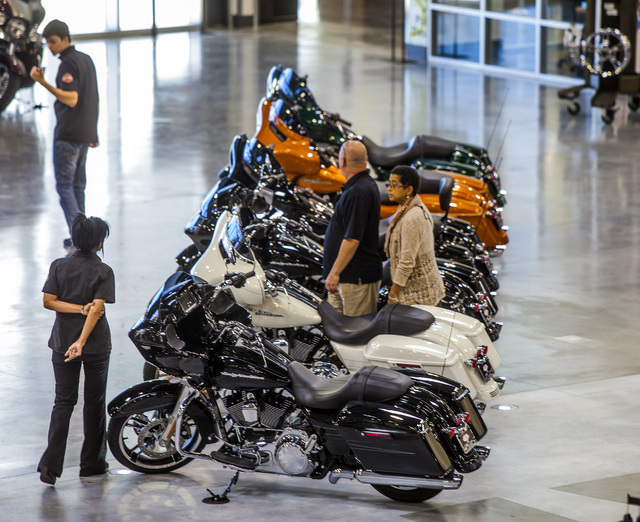Courses teach safety skills to motorcycle riders

Motorcycle riders enjoy superior handling, great gas mileage and the ability to park just about anywhere, but as with anything in life, there is a trade-off. According to statistics gathered by the Institute for Highway Safety, motorcyclists are undeniably at greater risk of dying in a crash than individuals riding in a passenger vehicle.
The most effective way you can avoid contributing to those statistics is to develop good riding habits from the beginning and always put safety first.
Choose a bike that matches your skill level. Take your time finding a bike that fits your physical characteristics, as well as your ability. Both of your feet should rest flat against the ground when straddling the bike and sitting on the seat.
The high-performance bike with the most powerful engine may look like it is fun to ride, but a motorcycle with an engine between 250cc and 300cc is more practical for most beginners.
Always wear the proper gear. Nevada law requires motorcycle riders to wear a helmet that meets the Department of Transportation safety standards. More importantly, your chances of surviving a motorcycle accident rise dramatically — more than 35 percent — if you are wearing a helmet, according to the National Highway Traffic Safety Administration.
If you choose to wear an open-face helmet, do not rely on your bike’s windscreen or regular eyeglasses to protect your eyes. Good safety goggles offer protection from flying debris while improving visibility. You should also invest in a pair of sturdy boots that cover the ankles, gloves with fingers to improve grip on the handlebars, and a leather jacket and pants to protect against road rash in case you ever fall off your bike.
Always wear your safety gear even if you are only riding a short distance or on residential and city streets. An accident can happen anytime, anywhere and at any speed. You should have full safety protection every time you ride your motorcycle, not just on long road trips.
One of the best ways to avoid developing poor riding habits is to take a motorcycle safety course such as the one offered at the College of Southern Nevada.
According to Roger Fox, the college’s motorcycle safety specialist, beginners are prone to speeding, inattention, improper braking, improper cornering and taking risks that exceed their skills. These are all errors that can lead to a devastating accident.
“For a beginner in the sport of motorcycling, taking a course will help them acquire the necessary mental and physical skills needed to ride a motorcycle and be a safer rider,” Fox said.
Before signing up for any safety class, verify that the course is approved by the Motorcycle Safety Foundation. The MSF is a nonprofit organization responsible for developing the internationally recognized Rider Education and Training System. Instructors also should be certified by the MSF.
The course curriculum should cover the fundamentals of safe motorcycle operation, including proper cornering and braking techniques. The course also should teach effective defensive driving strategies, such as swerving safely to avoid an accident.
Harley-Davidson also offers MSF classes for beginners and skilled riders.
For beginners, a motorcycle will be provided, but students are responsible for bringing their own safety gear, including DOT-approved helmets.
After successful completion of the course, you must pass a written test and successfully demonstrate your riding skills to receive a completion card. You can present the card to the Nevada DMV to receive a Class M license endorsement without further testing.
Developing good riding habits from the get-go and wearing the proper safety gear will allow you to enjoy your motorcycle to the fullest and reduce your risk of being involved in an accident.